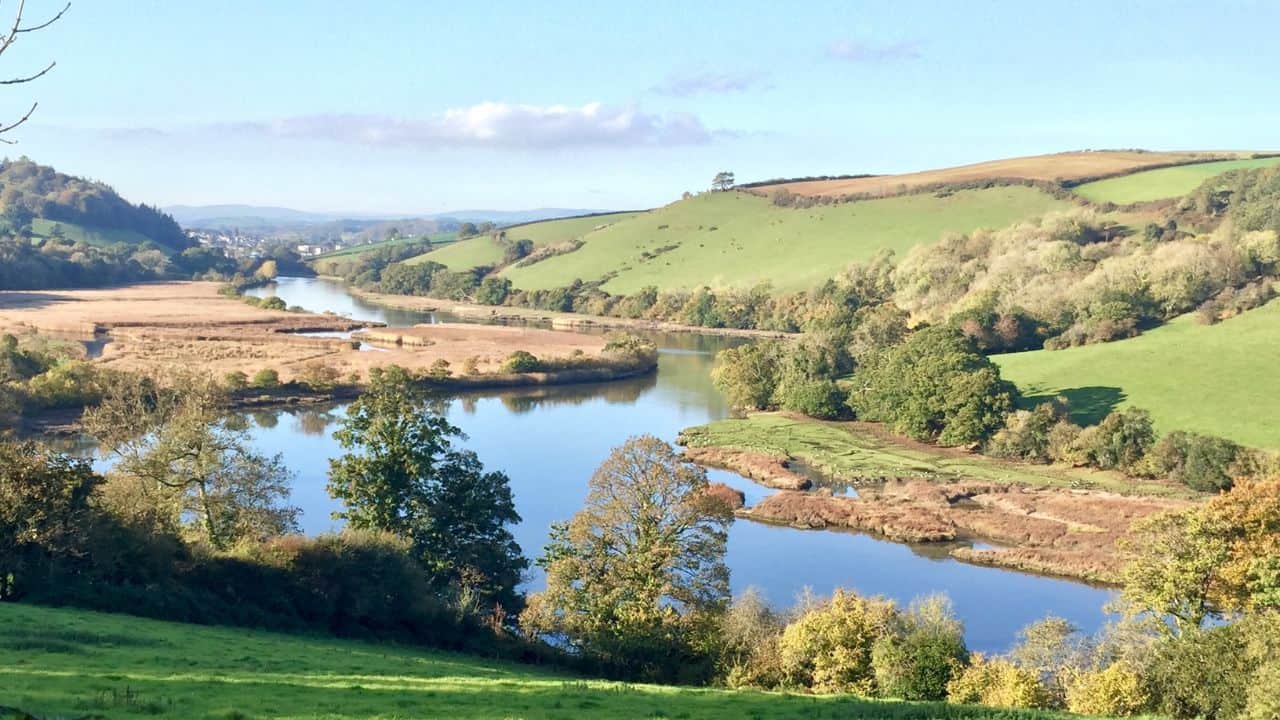Wild camping in Devon is a world-class experience, given the region’s unique geography – it’s unlike any other part of England. With its magnificent moorland, picturesque coastline, spectacular cliffs, and charming sandy beaches, Devon stands out.
It’s the only area in the country with a non-continuous shoreline stretching across both its northern and southern boundaries, as well as home to two National Parks – Dartmoor and Exmoor.
Here’s everything you need to know about the best camping spots in the region: their location, how to reach them, and what to expect.
Is Wild Camping Legal in Devon?
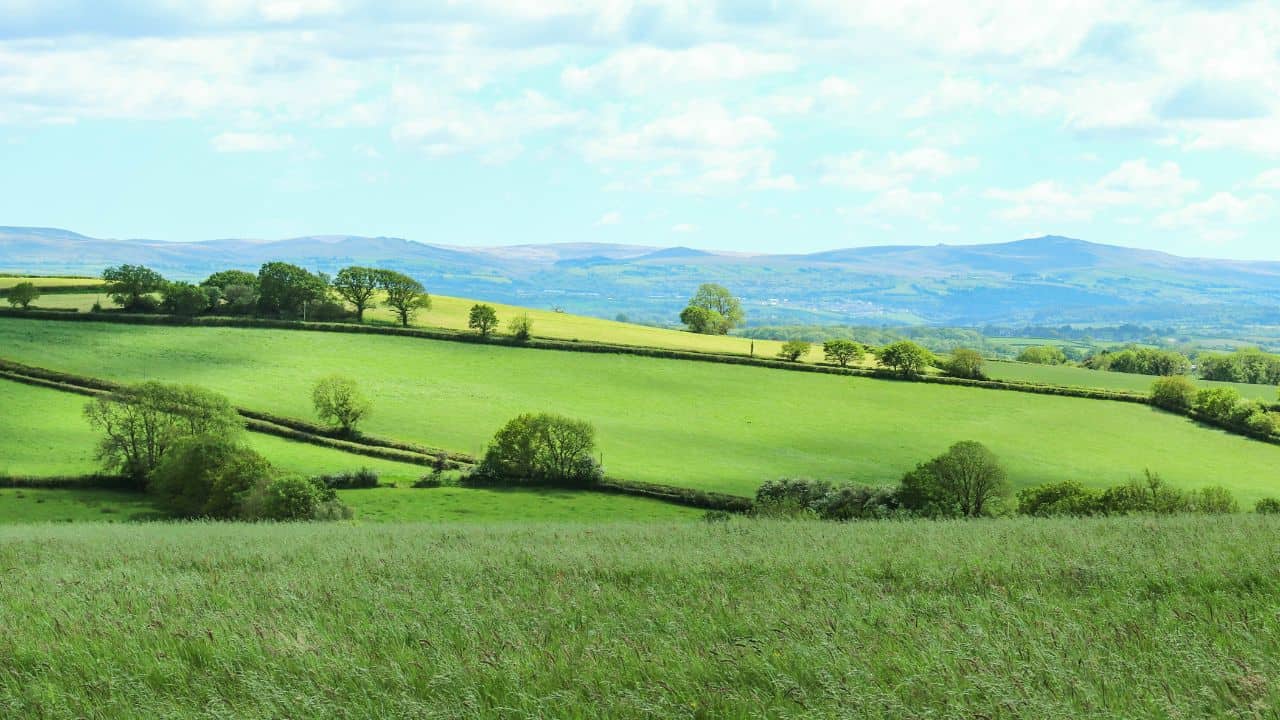
Devon is the only county in England featuring an area where wild camping is legal: Dartmoor National Park. However, you can’t wild camp just anywhere in Dartmoor – this interactive map can help you determine which parts of the National Park allow wild camping and which don’t.
Wild camping is technically illegal in the rest of Devon without the landowner’s permission. Still, it is tolerated more often than not, provided you don’t pitch on land that is cultivated or privately owned. You should always seek permission from the landowner if you think you’re on private land. They may charge a small fee.
Best Wild Camping Spots in Devon
Strete Gate Beach
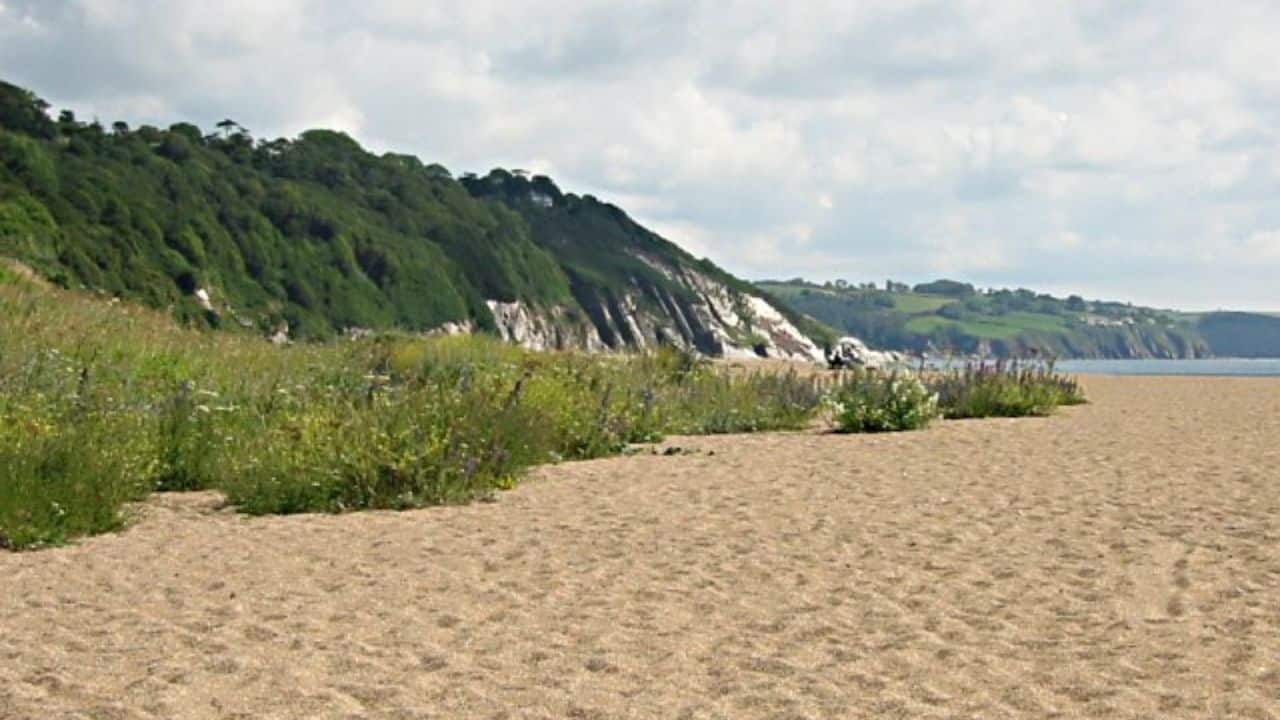
With scenic footpaths, secluded coves, excellent family resorts, and dramatic cliffs, South Devon’s shoreline has something for everyone. However, the best thing about this region is its beaches. With their dazzling blue waters and soft sands, they’re among the finest in Great Britain. One of Devon’s best beaches for wild camping is Strete Gate Beach.
Located between the villages of Strete and Slapton, Strete Gate Beach is a clean, safe, and beautiful beach of fine, light pebbles. Surrounded by cliffs, it provides visitors with breathtaking views of the English Channel. However, what will interest you the most as a wild camper is that you can pitch your tent here with complete peace of mind – the beach is not crowded even during the holiday season, and no one will harass you for spending a night under the stars.
Still, remember that this isn’t a particularly “wild” location and that you’ll probably encounter dog walkers, windsurfers, and other people while camping here. To make your time at the beach as peaceful as possible, pitch away from the water, i.e. as close to the bushes as possible. Also, remember that you don’t have to go into the nearby woods to answer the “call of nature” – there are toilets near the Strete Gate Car Park.
While in the area, walk south along the beach to the coastal village of Torcross (2 miles to the south). The sense of heritage and history that envelopes this place is clearly evident, making it a perfect destination for wild campers who are also history buffs. The nearby village of Strete and its thatched cottages and rose-clad gardens are also worth checking out.
Burrator Reservoir
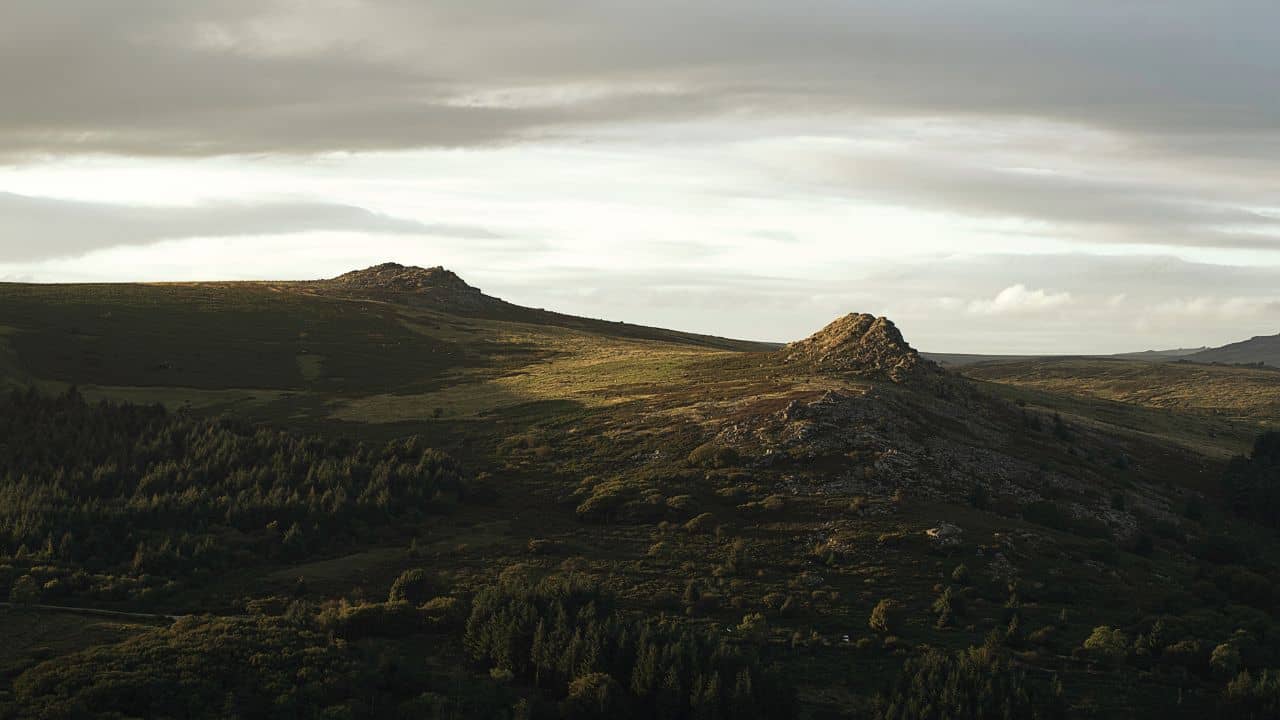
Lakes are relatively scarce in Devon, but they are all hidden gems, given their quality and location. One of these is Burrator Reservoir, whose tranquil water – and the mixed woodland surrounding it – starkly contrasts with the rugged tors and open moor of the Dartmoor National Park. Due to its wealth of bridleways and footpaths, the reservoir is popular with horse riders, cyclists, and hikers.
As for wild camping, those wishing to pitch a tent here have two options. According to this interactive map, there is a place near Burrator Reservoir where wild camping is completely legal. This would be the Sheeps Tor, an impressive granite wall dominating the reservoir’s skyline. Given its height and relative isolation, it provides wild campers with spectacular views of the countryside (to the west) and moorland (to the east).
Another option is to wild camp in the forest north of the lake. The area is super easy to get to and park; there’s lots of running water and plenty of trees for hammocks. While wild camping in this area is technically illegal, you should have no trouble if you try to find a secluded spot off the beaten tracks and stay out of sight. Using a camo tent is a good idea, too.
It’s worth noting that the woodland north of Burrator Reservoir is one of the most scenic areas in Dartmoor. Plenty of footpaths provide stunning views, while the abundance of small streams gives this place a peaceful, tranquil atmosphere. The Crazywell Pool – a fantastic wild swimming spot – is only a mile to the east.
Indeed, if the quiet serenity of Devon’s Burrator Reservoir has whetted your appetite for outdoor adventure, you may find wild camping in Northumberland a thrilling alternative. With its rugged coastline, sweeping landscapes, and star-studded skies, Northumberland offers wild campers an unparalleled experience, making it a delightful contrast to Devon’s gentle pastoral charm.
Consider swapping your woodland backdrop for the exhilarating expanse of the Northumberland National Park or the coastal splendor of the Northumberland Coast AONB. Like Burrator Reservoir, both areas offer plenty of paths to wander and a wealth of stunning views, ensuring that the spirit of your Devonian adventure continues, even as the scenery changes.
Bellever Forest
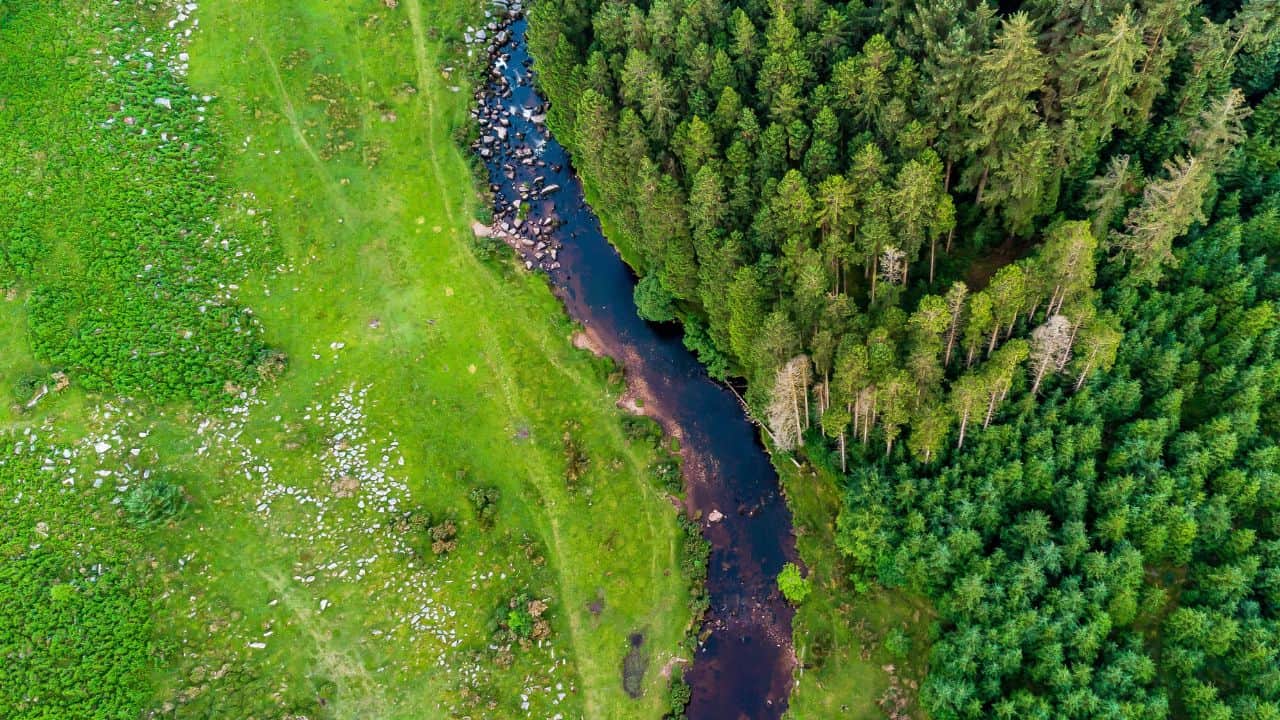
Another Devon location where wild camping is technically illegal – but people still do it – is Bellever Forest. Situated in the very centre of the Dartmoor National Park, it is one of the most beautiful (and most well-preserved) woodlands in the United Kingdom. The forest’s towering trees and lively wildlife make it a top-class wild camping destination.
Getting to this place is easy no matter where you’re coming from, and there’s even a car park at the forest’s northern end, where you can leave your vehicle. When searching for a place to set up camp, you’ll want to stay away from East Dart River, Bellever Tor, and Dartmoor Way – these are well-frequented by hikers. Instead, go deep inside the woodland and find a suitable place where you won’t be easy to spot.
Take your time to explore the forest while camping in the area. A peaceful walk through Bellever will likely reveal hut circles, grazing ponies, deer, and other exciting sights. On the other hand, if you’re seeking breathtaking views, head to Bellever Tor and Laughter Tor – both are nearby and provide climbers with stunning vistas of the surrounding moorland.
Many natural wonders are close to Bellever Forest, including Foggintor Quarry (more on this below), Sittaford Stone Circle, Combestone Tor, and Ryder’s Hill. If you’re a history fanatic, you’ll want to head some 4 miles northeast to Grimspound, a well-preserved Bronze Age village in a quieter part of the National Park. Wild camping at Grimspound is legal – you can pitch your tent there without any worries.
Foggintor Quarry
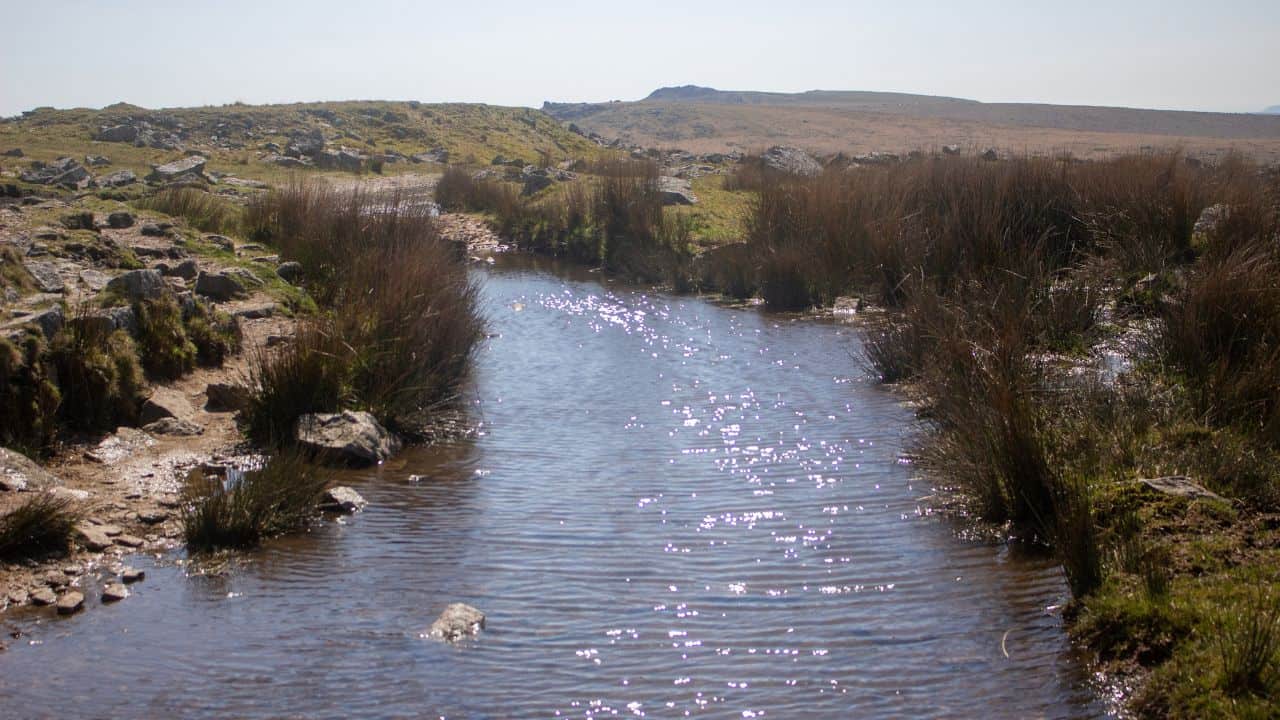
Situated a mile and a half west of Princetown, in Dartmoor, Foggintor Quarry is yet another of Devon’s majestic wild camping locations. This long-abandoned place features ruins that are fun to explore, but the quarry itself is the main attraction. It is filled with water and oozes desolate beauty that you won’t find anywhere else in Dartmoor. While some find it eerie, I consider Foggintor Quarry a fantastic wild camping location.
The most important thing you need to know about this place is that wild camping in the ruins outside the quarry is not permitted. However, you can camp inside the quarry – you only need to descend to one of the plateaus near the water and pitch your tent. The atmosphere in the pit is magical: the water is crystal-clear and peaceful, and no wind will bother you while camping here.
On the not-so-bright side, the quarry’s water, as clear and inviting as it may seem, is unsuitable for wild swimming – it’s teaming with leeches. Moreover, this place can get jam-packed (particularly during summer), so you will likely have to share it with other campers. It is also worth mentioning that many climbers use Foggintor Quarry for abseil practice.
While staying here, you’ll be very close to King’s Tor, Vixen Tor, Roos Tor, Great Mis Tor, Little Mis Tor, and Pew Tor – head to these to take in stunning moorland views. And, as mentioned above, you’ll be only a mile and a half from Princetown, where you can stock up on supplies. Make sure to check out the National Park Visitor Centre while in the town.
If Foggintor Quarry feels a bit crowded for your taste, wild camping near Avon offers a delightful alternative. The serene surroundings near Avon can provide an equally memorable experience with fewer campers around. With beautiful riverside spots and easy access to amenities, wild camping near Avon has become a favorite for many adventurers seeking tranquillity and beauty.
Cosdon Hill
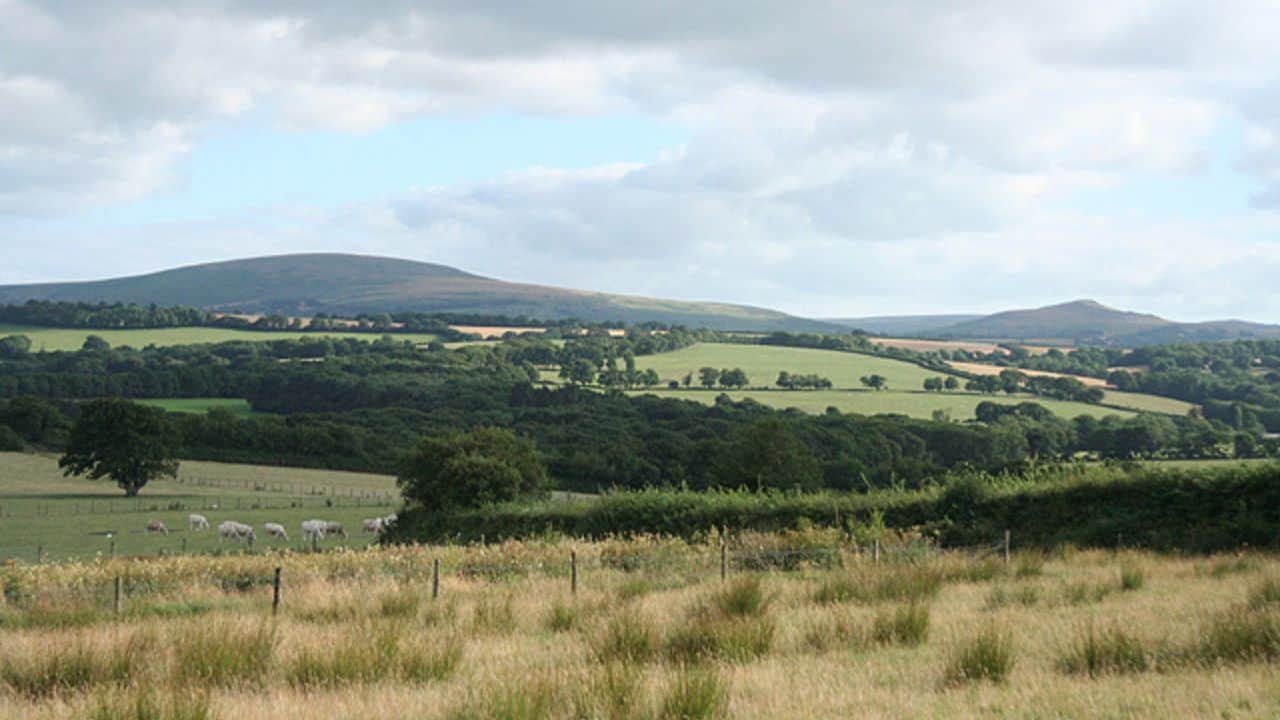
The next Devon wild camping spot is also located in Dartmoor, where it stands as one of the National Park’s most prominent features. The vast dome of Cosdon Hill, four miles southeast of Okehampton, dominates Dartmoor’s northern border and can be seen from miles around. The climb to the top of the hill is relatively easy, but it does require some effort.
Belstone, a nearby village, is a good place to start your hike. You can leave your vehicle at the village entrance and walk to Belstone Cleave from there. Once you reach Belstone Cleave, you’ll want to walk the path that winds around Cosdon Hill’s northern side and then follow the next trail to the top.
It is easy to identify the summit – you’ll find some stone shelters (excellent protection from the wind), a big pile of rocks, and a trig point. Once you reach the top, you’ll quickly realise that it’s impossible not to be impressed by the views. From Cosdon Hill, one can see all the way to North Devon Coast and the Exmoor National Park.
The whole of Cosdon Hill lies within the area of Dartmoor that permits wild camping. You are free to camp anywhere on the hill. Still, you’ll want to camp in a sheltered spot to minimise wind exposure. Finding such a place shouldn’t be an issue – the hill has many rocks that can provide adequate protection.
Berry’s Ground Lane
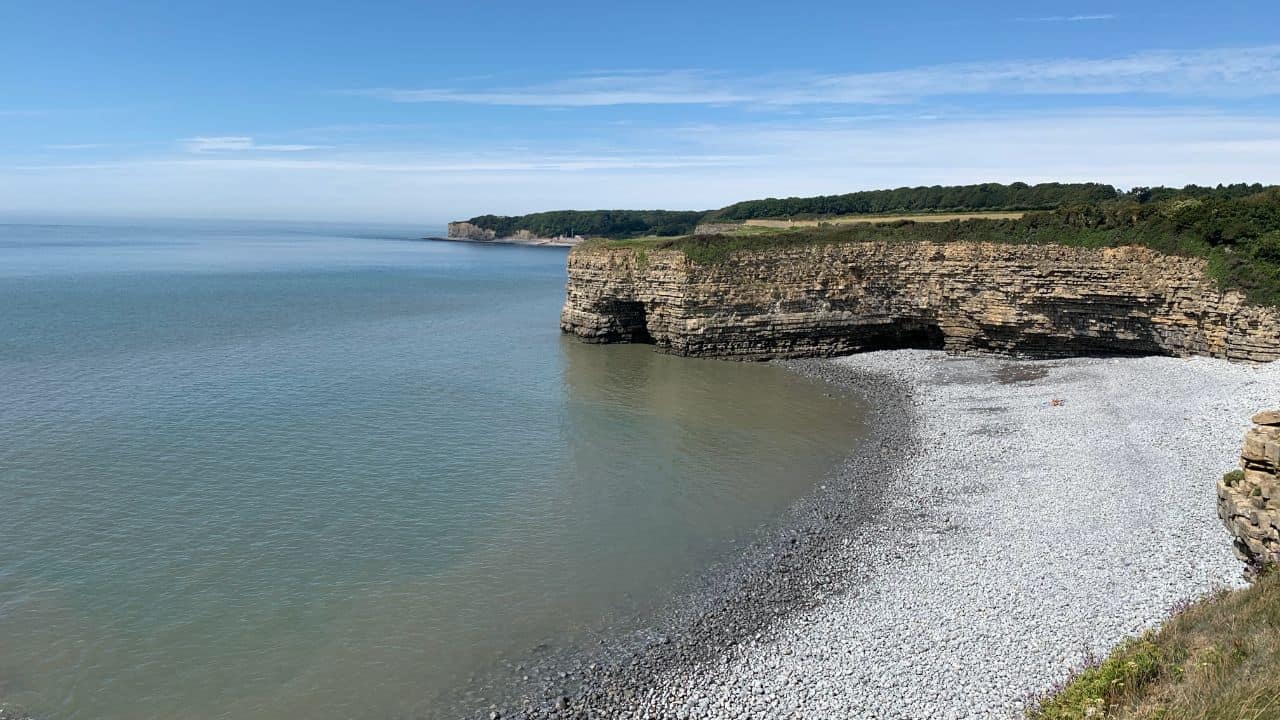
Unlike the spots described above, this one is in North Devon, less than a mile from the Bristol Channel. It’s best suited for motorhome wild campers. While you can certainly leave your campervan at the basic car park marked on the map and try pitching a tent in the woods just north of it, you’re better off sleeping in your vehicle. You’ll still have amazing views!
The place in question is a big road layby next to Berry’s Ground Lane, which runs in the east-west direction from Martinhoe to Lee Abbey just below Woody Bay. As mentioned above, the view from this location is nothing short of breathtaking – on a clear day, you can see all the way to Swansea in Wales. Seeing the sunrise from this place is just as unforgettable.
There are no amenities of any sort here, but that’s not something most wild campers expect anyway. However, there is an honesty box – pop in some coins if you feel like you might want to return to this place one day and don’t want the “no camping” signs to appear. Even though it’s quite spacious, the layby can get pretty busy in the summer: you’ll want to arrive here as early in the day as possible.
One particularly great thing about this place is that it’s very close to the Valley or Rocks, considered by many the most beautiful place in all of Devon. You only have to drive east along the coast for about two miles to get there. An alternative is to head west to Hedddon’s Mouth (1.5 miles), a rocky cove whose remarkable isolation allowed the personnel of a German U-Boat to use it as a refuge during World War II.
Welcombe Mouth Beach
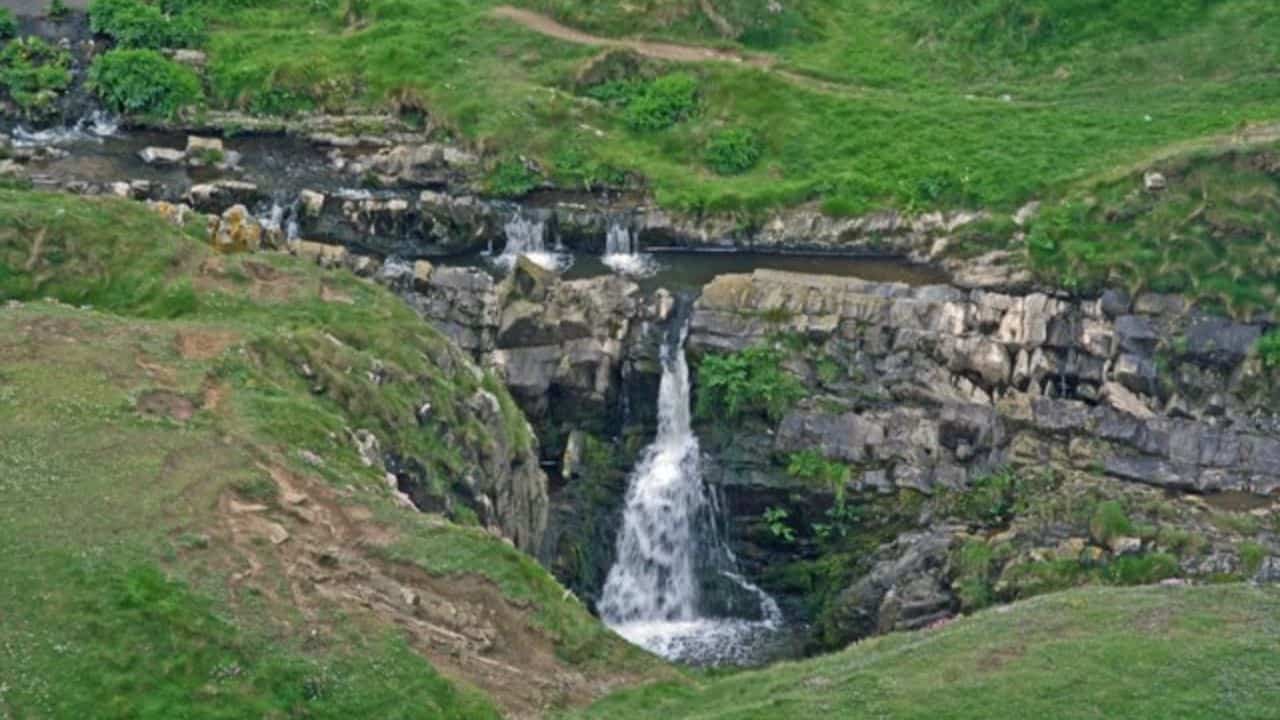
The following wild camping location is also situated on Devon’s northern coast, although much further to the west, close to the county’s border with Cornwall. Designated as an SSSI (Site of Special Scientific Interest) and well-known for its spectacular cliffs, Welcombe Mouth Beach is an excellent destination to spend a night under the stars. Make sure to bring your camera – this place is seriously photogenic.
There are two ways to wild camp here. The first is staying at a spacious car park in your motorhome. The road leading to the car park is quite treacherous and full of deep potholes – make sure to take it slowly while driving there. The second way is tent-pitching, which you can do at the beach or up on the cliffs (preferably away from the popular South West Coast Path).
The small river flowing into the sea at the beach’s northern end significantly contributes to this place’s serene atmosphere. There is a waterfall at the river’s end, and several rock pools are great for fishing. Those who decide to camp high up on the cliffs will be rewarded with magnificent Atlantic views (but will also have to deal with high winds – try setting up camp behind a boulder).
Trek over the border with Cornwall to Higher Sharpnose Point and Lower Sharpnose Point for even more stunning views. You may also want to check out Speke’s Mill Mouth Waterfall (3.5 miles to the north), one of Devon’s most spectacular waterfalls set in a breathtaking area of high cliffs and hanging valleys. Finally, the Old Smithy Inn in the nearby village of Welcombe is a great place to grab a pint.
Hangingstone Hill
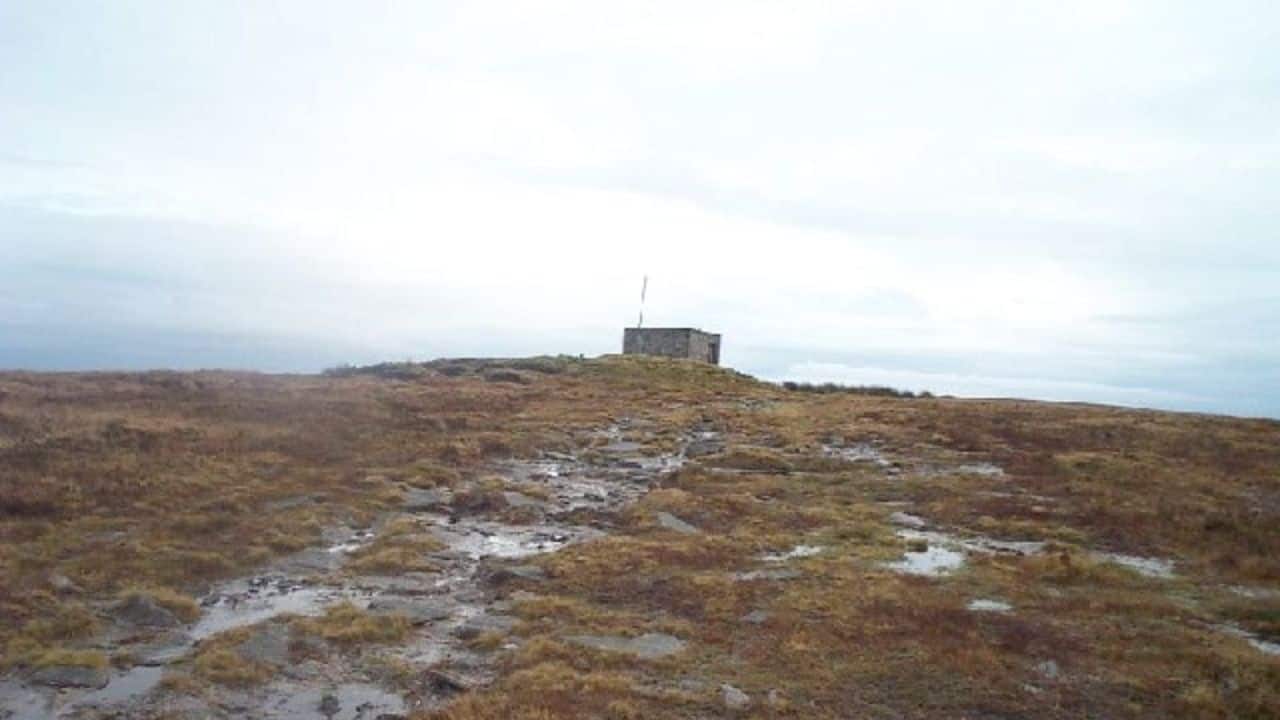
Located in the central part of northern Dartmoor and previously known as Newtake Hill, Hangingstone Hill is the third-highest point in the National Park. For that matter, it can be easily seen from other parts of Dartmoor. As for the moniker, a peculiar rocking stone can be found on the northwestern slope of the hill, which gives it its name.
Getting here shouldn’t be an issue if you’re reasonably fit. Drive north from Okehampton to the observation post at Okement Hill. Once there, you’ll have to follow the southern track for two and a half hours to get to Hangingstone Hill. You should not approach the hill if a red flag is displayed, as it lies within an army firing range.
Rather than being a destination in its own right, Hangingstone Hill is more of a hiking stopover. However, it provides visitors with spectacular moorland views – from here, you’ll be able to see the entirety of Dartmoor’s north plateau. Still, that’s pretty much all you can do here: once you’ve taken in the views in the morning, you’ll want to pack up and check out other points of interest in the area.
To the west, you will have Cranmere Pool, the site of Dartmoor’s first letterbox, in a peat bog. To the south, you’ll have Whitehorse Hill and its intriguing Bronze-Age tomb. To the north is one of the best viewpoints in the entire National Park – Steeperton Tor. All of these landmarks are easily accessible from Hangingstone Hill.
Ashbourne Woods Wild Camping
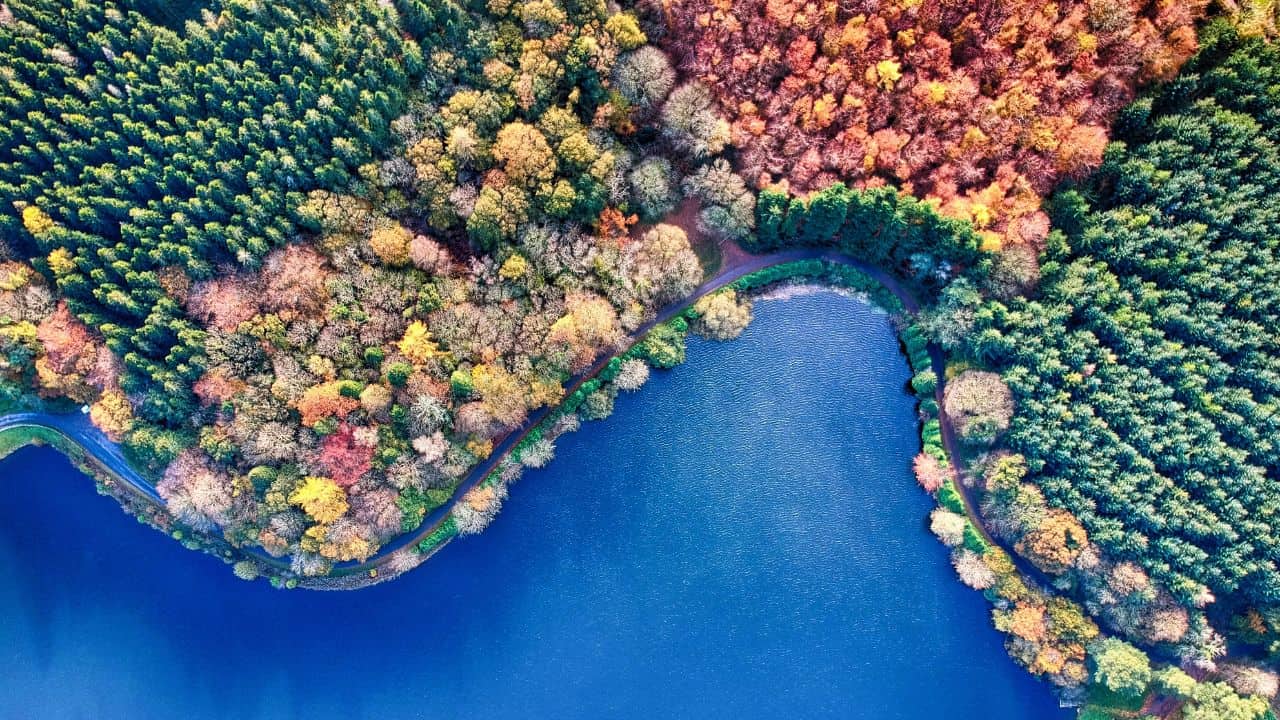
While not a “real” wild camping location, Ashbourne Woods can provide visitors with that good-old back-to-basics camping experience. Spread over 68 acres of woodlands, this highly renowned campground is a stone’s throw from Devon’s most famous wilderness area – Dartmoor. The campsite is very easy to access whether you’re coming from the east (Exeter) or west (Plymouth) due to its proximity to Devon Expressway (A38).
There’s a lot to like about Ashbourne Woods. First of all, the campground caters to all overnight stays, including wild camping. Visitors can choose between gravel, woodland, grass, and hammock pitches. However, if you’re looking for more shelter, the campsite still has you covered (no pun intended) – kiwi huts, gipsy huts, camping pods, and bell tents are also available.
One particularly good thing about this place is that it allows campers to make fires in fire pits. Visitors can also access free parking, self-serve laundry, a picnic area, and a shared bathroom. All pitches are well-sized and have water hookups; campers can bring their dogs and other pets.
The Ashbourne Woods campsite can also be an excellent base for exploring this area of Devon. Those staying here will be only a few miles east of Dartmoor and all its natural wonders. To the west is the beautiful “English Riviera”, i.e. the seaside towns of Brixham, Paignton, and Torquay, all abundant with leisure and recreational attractions.
Where to Next?
Though the allure of wild camping in Devon is hard to resist, let’s not forget the Yorkshire Dales – a breathtaking alternative. Offering dramatic landscapes peppered with historical landmarks and crisscrossed by picturesque valleys, the Dales present a different but equally enticing opportunity for your outdoor adventures.
From trekking across rolling hills to finding solace in secluded valleys, wild camping in the Yorkshire Dales promises an experience that is unique and unforgettable. No matter where you pitch your tent, the wild beauty of England’s countryside never ceases to amaze.

I love hiking, backpacking, and camping. From the Camino de Santiago to the West Highland Way in Scotland or simply a great day hike on the weekend. Hiking refreshes me, my mind, and keeps my body reasonably fit. So far I have walked three Camino routes and many other long distance hikes in the UK, Canada, and around the rest of Europe. One of the best was my hike up Ben Nevis.

